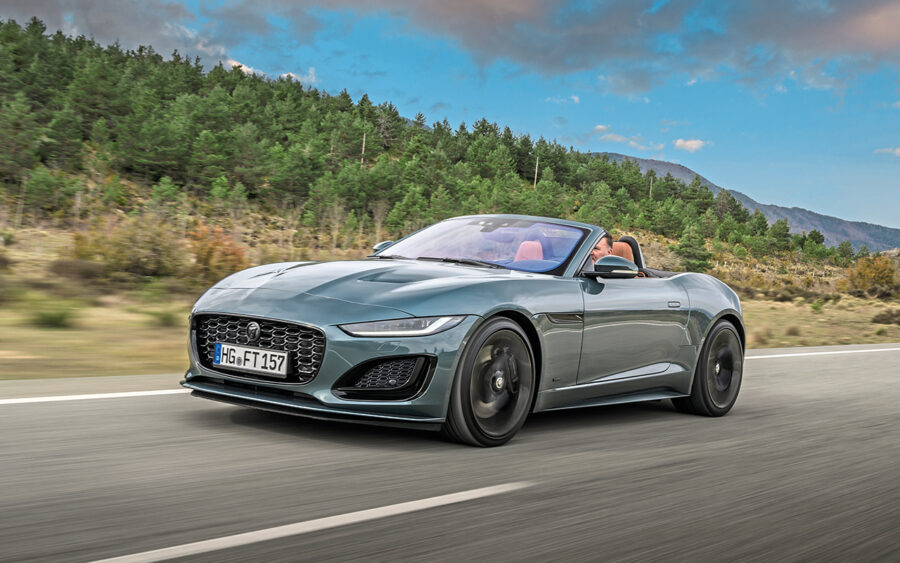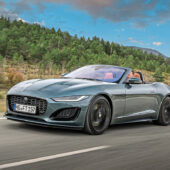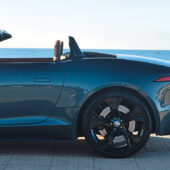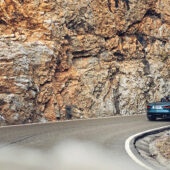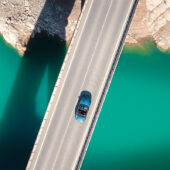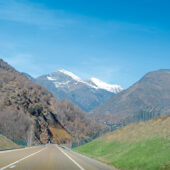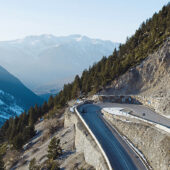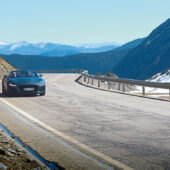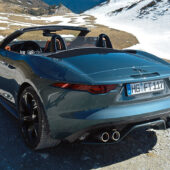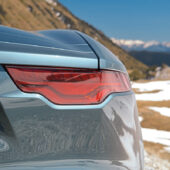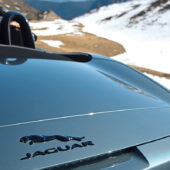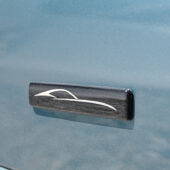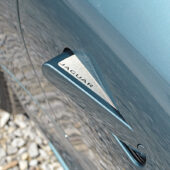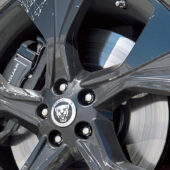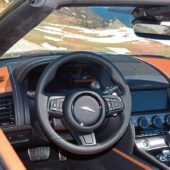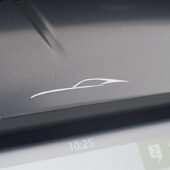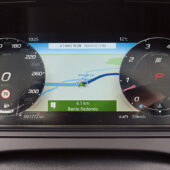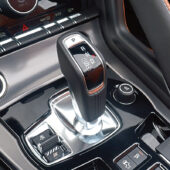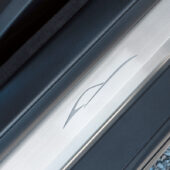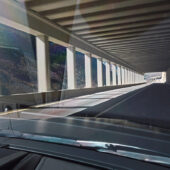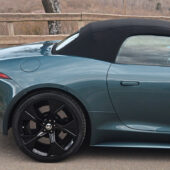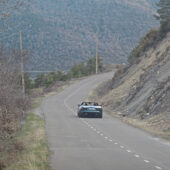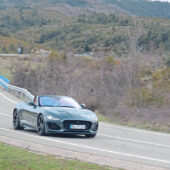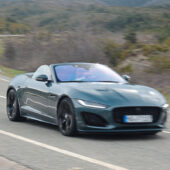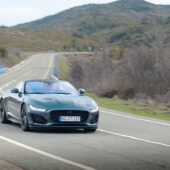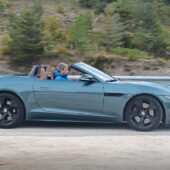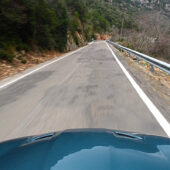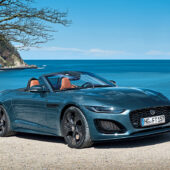With production of the F-Type set to end later this year, we reflect on its ten-year life by driving the Jaguar F-Type 75 across Spain
Words: Paul Walton Images: JLR, Paul Walton
“Saying goodbye doesn’t mean anything,” the American actor Trey Parker once said. “It’s the time we spent together that matters, not how we left it.”
Personally, I don’t agree. When Jaguar announced in late 2022 that production of the F-Type is set to end soon, after spending so much time with the model over the last ten years, it was important I said goodbye to the car in a suitable and appropriate manner. Such as driving an example of the final special edition, the 75, from one side of Spain to other.
My journey starts at Sitges, a pretty little coastal town around 40km south of Barcelona. Although now a popular holiday destination, it was once the centre of motor racing in Spain’s Catalonia region and between 1908 and 1923 several road races started from here. A nine-mile oval circuit, Autódromo de Sitges-Terramar, was later built a few miles outside the town but now lies largely abandoned.
The plan is to head west on mainly B roads before climbing over the Pyrenees and finishing at San Sebastián on Spain’s Bay of Biscay coast. It might be an 800km journey that will see sun, snow and, miles and miles of blue sky but I have the perfect car for such an epic journey like this, an F-Type 75 roadster with the 450PS 5.0-litre V8.
Not only does this new special edition celebrate three quarters of a century of Jaguar sports cars but the company says it will be the final update of the now decade-old model before production finally comes to an end later this year.
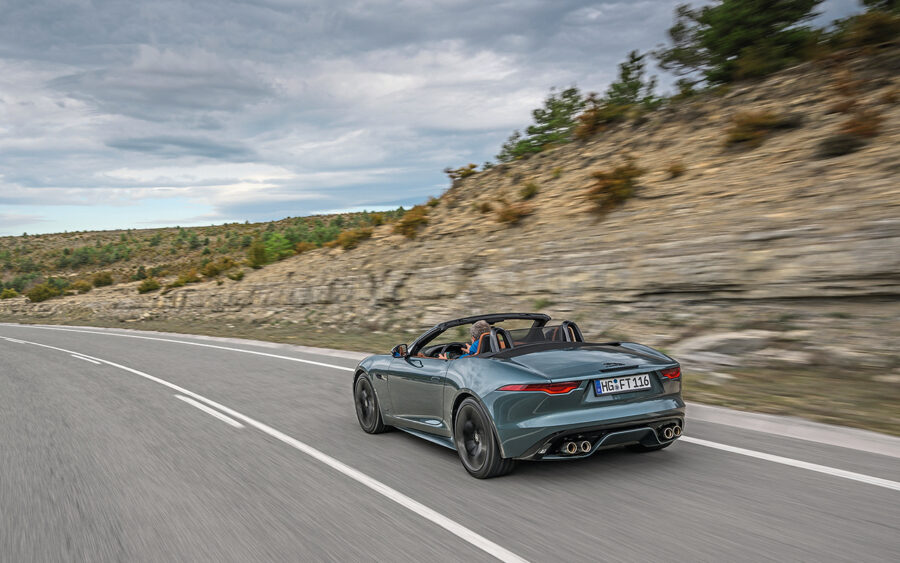
I can’t believe it’s ten years that I flew to Spain for the car’s original press launch. As Jaguar’s first proper two-seater sportscar in my lifetime, following months of being drip-fed information about the car, I can clearly remember the excitement when I finally climbed into one. “As I pull away slowly for the first time, I get a genuine sense of this is it, this is what you’ve been waiting for.” I wrote in the June 2013 issue of Jaguar World magazine. “I pray it doesn’t disappoint. It doesn’t.”
And a decade later, that’s still the case.
The F-Type might long in the tooth but following a subtle but successful facelift in early 2020 that saw new, slimmer headlights plus redesigned rear clusters, the car still looks good, as illustrated by the many admiring glances it receives as I cruise out of Sitges. Long, low, and well-proportioned, it remains everything a sports car should be. Plus the Giola Green of the 450PS V8 version I’m driving that’s exclusive to the 75 model is a very elegant hue while the black 20in five-spoke alloys give the car a muscular appearance
Available in both the 450 and R specification and in either coupe or convertible form, the 75 differs little from the standard models and is only distinguishable by a small icon of the Coupé’s outline found on the front wing, aluminium door tread and touch screen surround. Although not as memorable or as well specified as some of Jaguar’s other final editions, including the XK8/R 4.2-S or XK Dynamic-R, I’m sure due to its rarity the 75 will become as collectable as special editions gone by.
The F-Type’s interior has barely changed over the last ten years, still having the joystick style of shift lever plus the twin cowled dials and a grab handle that separates the two seats. As I begin my journey through Spain, I reckon it still looks good, especially the tan leather upholstery of this example that’s a perfect match for the green exterior.
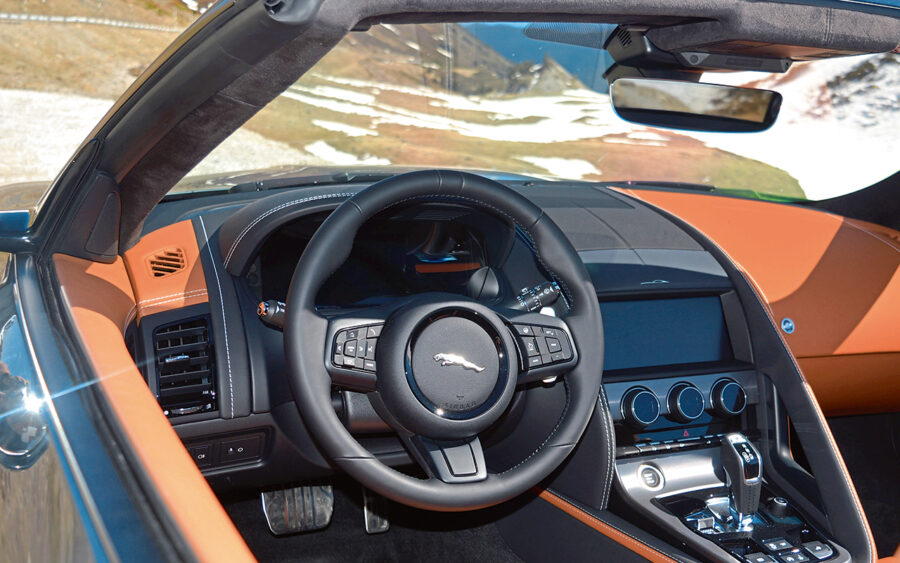
One area of the interior design that’s always bothered me is the air vents that rise out of the dash top. “We wanted the experience of sitting in the F-Type to be exciting,” said Jaguar’s then design director, Ian Callum, at the time of the car’s launch. The result of wanting to keep the facia as low as possible, personally I think they’re a compromise and ruin the look of the interior, especially on a hot day like this when the air conditioning is permanently running.
Interior space has always been an issue and take it from someone who has spent hours and hours behind the wheel, the car can start to feel cramped over time. The convertible’s boot is also ludicrously small and for previous long journeys I needed to pack even more lightly than Stuart Little.
But such criticisms are largely forgotten the moment I reach the outskirts of Sitges and I’m able to finally give it the beans. Although the 450PS isn’t as bombastic as the F-Type R which now has the 575PS (567bhp) version of Jaguar’s 5.0-litre V8, it still has a strong and compelling performance, responding the moment I squeeze the throttle. By also being drivable in all situations (not something that can be said about the R that’s like trying to tame a bucking bronco), it’s my favourite of the current V8 range.
After passing through a sequence of sleepy villages such as Calaf, Salsona and Coll de Nargo, the road is swallowed by several long tunnels cut into the hillside. I can’t help but switch on the active exhaust as I thunder through the hollowed-out rock, the note from the rear sounding even louder than Barry White in the shower.
The Pyrenees quickly start to fill the windscreen and my route over this famous mountain range will be the Port de La Bonaigua, a daunting 12-mile long pass that reaches a height of 2072m making it one of the highest roads in Europe.
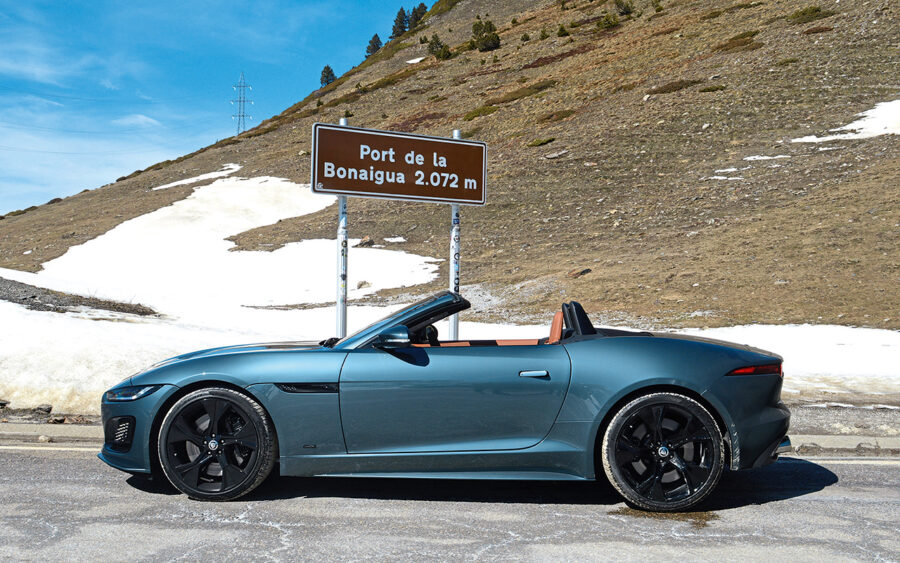
From Scotland’s North Coast 500 to sections of the Le Mans circuit, I’ve driven F-Types on a variety of roads over the years. But the constant series of left and right hairpins plus long straights makes the Port de La Bonaigua easily the most challenging. But it doesn’t take long for me to realise I’ve brought the perfect tool for the job.
Thanks to the responsiveness of the supercharged engine, it accelerates keenly out of the tight corners, more so when I control the ZF-sourced eight-speed transmission via the steering wheel-mounted paddles. Never the smoothest or refined of boxes, the gears tending to bang into place, its ‘Quickshift’ feature does offer unusually fast changes which further intensify the exhilaration of the moment.
Not only is the steering perfectly weighted but thanks to the all-aluminium roadster weighing a relatively miniscule 1793kg, it’s as agile as a sports car should be. Plus I’ve always preferred F-Types with rear-wheel drive like this over those with AWD which makes the car feel numb and heavy in comparison.
Even though it’s warm and sunny, the barren landscape quickly becomes covered with a thick layer of snow. Yet despite the inhospitality of the surroundings, I’m still pleased to be driving a convertible since they make any journey feel more of an adventure. But in my opinion, the Coupé is the prettier of the two variants. The wide rear haunches that are a result of the narrow hatchback result in more of a muscular and aggressive appearance than the ragtop.
“It is the best looking Jaguar since its illustrious forebear [the E-type],” I said in the May 2014 issue of Jaguar World magazine after attending the separate Coupé press launch, also in Spain. “While the XJ-S has presence, the X100 grace, and X150 attitude, the F-Type Coupé is simply beautiful, achingly so in fact.” A lot of time might have passed since I wrote that but I still stand by that sentence.

Although disappointed when I reach the summit, thanks to the incredibly clear air I’m rewarded with a breathtaking view across to the snow topped Gran Encantat, a 2748m mountain way in the distance.
After next passing through the popular Baqueira-Beret ski resort, the skiers no doubt uncomfortable wearing their thick winter suits in 24-degree heat, I skirt around the edges of the Aigüestortes i Estany de Sant Maurici National Park, a 100,950-acre area of national beauty, and head further west.
I soon pick up the N240, a major 340-mile long road that links Tarragona with Bilboa but at Sigüés I decide to take a long but enjoyable detour I’ve experienced many times before. The famous Carretera del Roncal is a twisting, turning, tight ribbon of tarmac that shares the bottom of a deep, tree-lined gorge with the fast-flowing River Esva.
With the V8 again responsive and the asphalt occasionally loose, the F-Type is once again the perfect car. But due to it using a section of the X150 XK’s platform, at 1.9m it can also feel uncomfortably wide for such a narrow road.
The car comes back into its own on the more open and faster Carrera de Las Coronas that winds around the Monte la Sierra, a 1307m high peak. With an empty road ahead of me, I once again gun the throttle hard, the big engine responding immediately as I do so, the engine’s deep, dirty, and distinctive growl no doubt ricocheting off the nearby mountain.
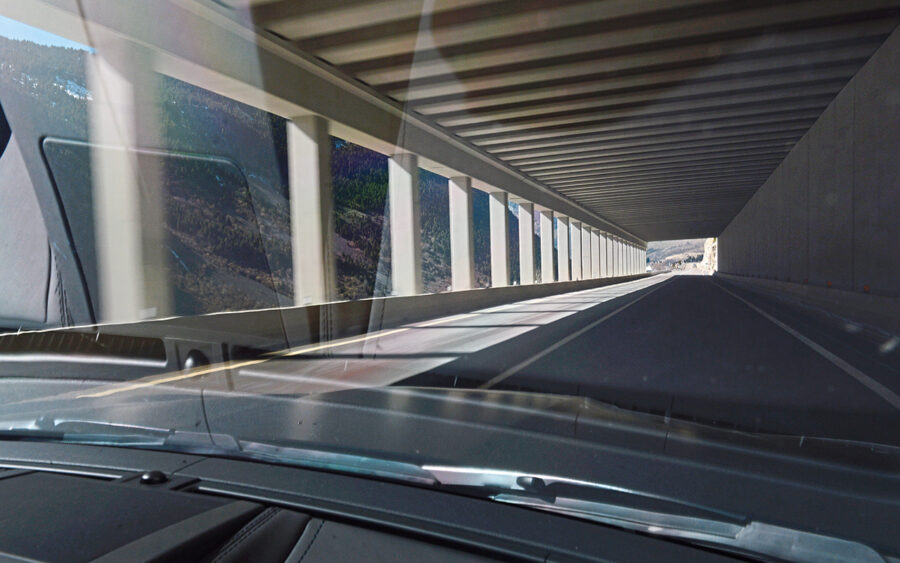
At the town of Lumbier I join the A21 motorway that takes me past the 2.4-mile long Circuito de Navarra where, as part of the original 2013 press launch, I was allowed to hoon round the empty track in the now defunct 380PS V6 S model that was replaced by the 450PS V8 in 2020.
It might be a decade ago but I can still remember in terms of braking and handling how impressed I was by how well the car coped with the pressures of a circuit. It was further proof Jaguar wasn’t relying on its past glories and this was a modern high-performance sports car as good as anything coming out of Stuttgart, Maranello or even Norfolk.
“The ease with which the F-Type can be held in power-slides and steered ‘on the throttle’ is indeed a true sports car,” I continued in the June 2013 issue of Jaguar World magazine. “It’s much more like a larger, refined Lotus Elise than a smaller XKR.”
At Pamplona I take the AP-15 which, following a final fast blast, finishes on the Atlantic coast. Although the F-Type’s occasionally hard ride meant I felt every single one of the bumps in the isolated roads that brought me here, on the table-smooth surface of the motorway it’s as comfortable as the famously supple X100 XK8 but with almost twice the grunt.
Several hours after leaving the Mediterranean, I finally cruise into San Sebastián, another beautiful seaside resort this time overlooking the Bay of Biscay.
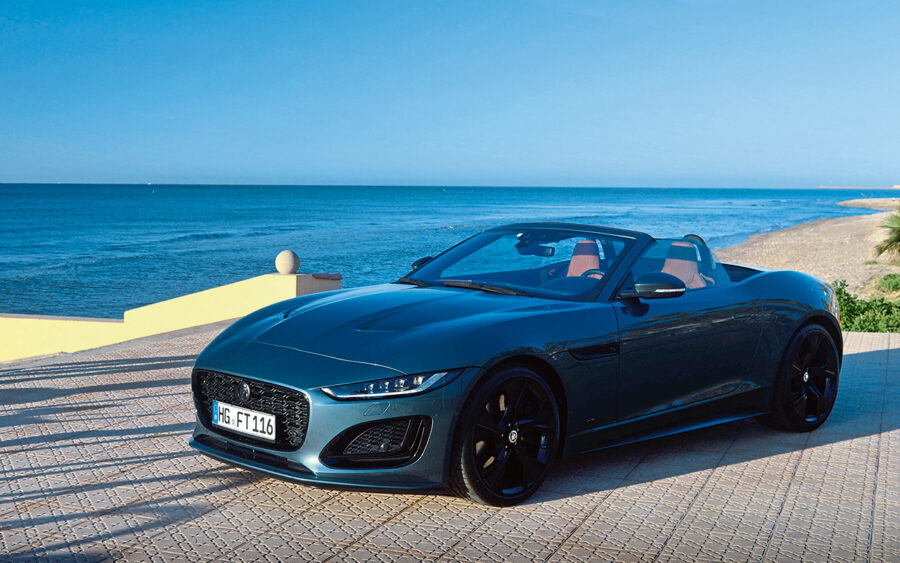
My finish line is the grounds of the Miramar Palace in the heart of the town that was once owned by the Spanish royal family that offers terrific views over the San Sebastian’s beautiful La Concha Bay plus the rocky Sant Clara Island in the distance.
As I look out to sea, the green Jaguar getting as many glances here as it did in Sitges several hours ago, I can’t help but feel sad it’s all over, and I’m not just talking about the journey.
There’s no denying at ten years old – the engine and chassis going back even further – the F-Type is no longer at the cutting edge of design, performance, or interior packaging. Plus with Jaguar due to start concentrating on low-volume electric vehicles from 2025 onwards, the car no longer fits its business model or future image.
Yet I will still miss the F-Type when production finally ends. Not perfect by any means, but no matter the variant, location, or road, as this final blast across Spain shows, the car has always offered something few do these days. And that’s fun.
And so when the end does come, at least I’ve said goodbye to the car in the most appropriate way possible.

